
CFA Level 1 (2009) - 3
.pdf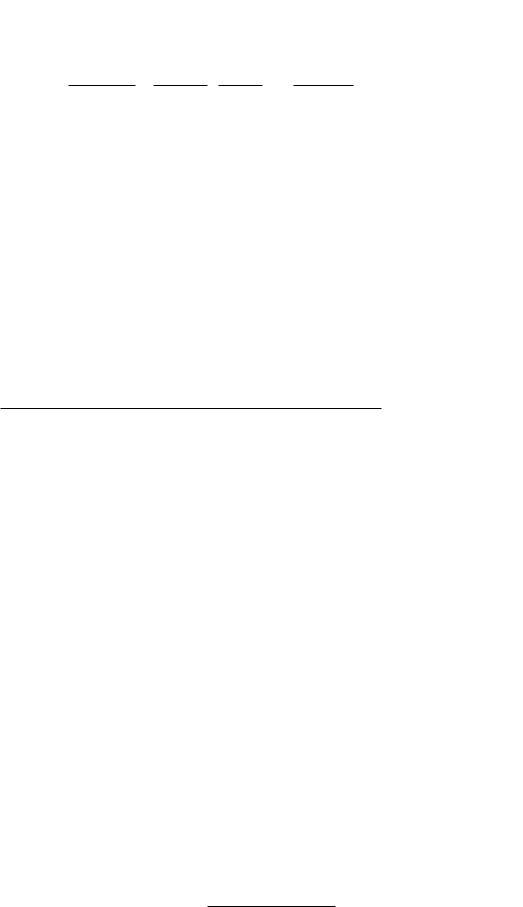
Study Session 8 Cross-Reference to CFA Institute Assigned Reading #34 - Understanding the Cash Flow Statement
I.Using the following information, what is {he firm"s cash flow from operations?
Nct incomc |
$120 |
||
Decrcasc in accoullls receivablc |
20 |
||
Depreciation |
25 |
||
Increase in |
inventory |
10 |
|
Increasc in |
aCCOlllllS payable |
7 |
|
DCClease in wagcs payable |
5 |
||
1ncrcase in deferred tax liabilities |
15 |
||
Profit from |
the sale of land |
2 |
|
A. |
$15R. |
|
|
B. |
$170. |
|
|
C. |
$174. |
|
|
Use the following data to answer Questions 2 through 4.
|
Nct income |
|
|
|
$45 |
|
|
Depreciation |
75 |
||||
|
Taxes IJaid |
|
|
|
25 |
|
|
Interest paid |
5 |
||||
|
Dividends paid |
10 |
||||
|
Cash received from sale of company building |
40 |
||||
|
Sale of preferred srock |
35 |
||||
|
Repmchase of common stOck |
30 |
||||
|
Purchase of machinery |
20 |
||||
|
Issuance of bonds |
50 |
||||
|
Debt retired through issuance of common Slack |
45 |
||||
|
Paid off long-term bank borrowings |
15 |
||||
|
Proht on sale of building |
20 |
||||
|
|
|
|
|
|
|
2. |
The cash flow from operations is: |
|
||||
|
|
A. |
$70. |
|
|
|
|
|
B. |
$100. |
|
|
|
|
|
C. |
$120. |
|
|
|
©2008 Kaplan Schweser |
Page 131 |
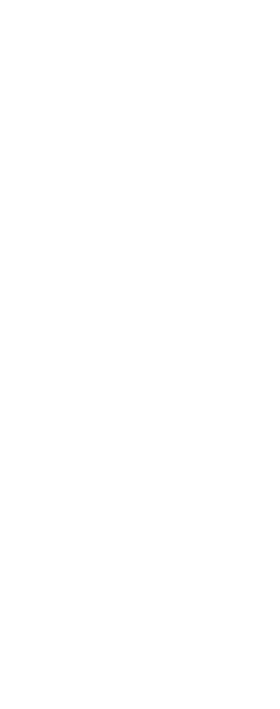
Study Session R
Cross-Referencc to CFA Institute Assigned Reading #34 - Understanding thc Cash Flow Statemcnt
3.The cash flow from investing activities is:
A. -$30.
13. $20. e. 50.
4.The cash flow fromfiml1lcing aetillities is:
A.$30.
B.$55.
c:.$75.
5.Given the following:
Sales |
$1,500 |
Increase in inveIHory |
100 |
Depreciation |
150 |
Increase in aCCOlllllS reccivahk |
'i0 |
Decrease in ;ICCOllnIS pay:lhlc- |
70 |
Arter-lax proht margin |
|
Gain 011 sale of machinery |
$30 |
|
|
The cash flow from operations is:
A.$115.
B.$275. e. $375.
6.Which of the following items is Least LikeLy considered a cash flow from financing activity under U.S. GAAP?
A.Receipt of cash from the sale of bonds.
B.Payment of cash for dividends.
C.Payment of interest on debt.
7.Which of the following would be Least Likely ro cause a change in investing cash flow?
A.The sale of a division of the company.
B.The purchase of new machinery.
C.An increase in depreciation expense.
8.Which of the following is Least LikeLy a change in cash flow from operations under U.S. GAAP?
A.A decrease in notes payable.
B.An increase in interest expense.
C. An increase in accounts payable.
Page 132 |
©2008 Kaplan Schweser |

Study Session 8 Cross-Reference to CFA Institute Assigned Reading #34 - Understanding the Cash How Statement
9.Where are dividends paid to shareholders reponed in the cash Aow statemcm under U.S. GAAP and IFRS?
U.S. CAAP
A. Operating or financing acrivities B. Financing activities
c:. 0rcrating acrivities
I D. Sales of inventory would be classifIed as:
A.operating cash Aow.
B.investing cash Aow. e. financing cash flow.
11. Issuing bonds would be classified as:
A.investing cash How.
B.financing cash flow.
e:. no cash flow impact.
12.Sale of land would be classified as:
A.operating CJsh How.
B.investing cash How.
e.fi nancing cash flow.
13.An increase in taxes payable would be classified as:
A.operating cash flow.
B.financing cash flow.
e.no cash flow impace.
14.An increase in notes payahle would be classified as:
A.investing cash Aow.
B.financing cash flow.
e:. no cash flow impact.
15.Under U.S. GAAP, an increase in interest payable would be classified as:
A.operating cash flow.
B.financing cash flow.
e.no cash flow impact.
16.Under U.S. GAAP, an increase in dividends payable would be classified as:
A.operating cash flow.
B.investing cash flow.
e.financing cash flow.
17.The write-off of obsolete equipment would be classified as:
A.operating cash flow.
B.investing cash flow. e. no cash flow impact.
18.Sale of obsolete equipmem would be classified as:
A.operating cash flow.
B.investing cash flow.
e. financing cash flow.
©2008 Kaplan Schwescr |
Page 13j |

Study Session 8
Cross-Reference to CFA Institute Assigned Reading #34 - Understanding the Cash Flow Statement
19.Under IFRS, iIHerest expense woulJ be classified as:
A.either operating cash How or fin;lI1cing cash flow.
B.operating cash flow only. e. financing cash flow only.
20.Depreciation expense would be classified as:
A.operating cash How.
B.investing cash How.
e.no cash flow impact.
21.Under U.S. GAAP, dividends received from investments would be classified as:
A.operating cash flow.
B.investing cash flow.
e.f1nancing cash How.
22.Torval Inc. retires debt securities by issuing equity securities. This is considered a:
A.cash Bow from investing.
B.cash flow from financing.
C.noncash transaction.
23.Net income for Monique Inc. for the year ended December 31, 20X7 was
$78,000. Jts accounts receivable balance at December 31, 20X7 was $121,000, and this balance was $69,000 at December 31, 20X6. The accounts payable balance at December 31, 20X7 was $72,000 and was $43,000 at December 31, 20X6. Depreciation for 20X7 was $12,000, and there was an unrealized gain of $15,000 included in 20X7 income from the change in value of trading
securities. Which of the following amounts represents Monique's cash flow from operations for 20X7?
A.$52,000.
B.$67,000.
C. $82,000.
24.Martin Inc. had the following transactions during 20X7:
• Purchased new fixed assets for $75,000.
• Converted $70,000 worth of preferred shares to common shares.
•Received cash dividends of$12,000. Paid cash dividends of$21,OOO.
•Repaid mortgage principal of $17,000.
Assuming Martin follows U.S. GAAP, which of the following amounts represents Martin's cash flows from investing and cash flows from financing in 20X7, respectively?
Cash flows from investing
A. ($5,000)
B. ($75,000)
C. ($75,000)
Page 134 |
©2008 |

Stlldy Session 8 Cross-Reference to CFA Institute Assigned Reading #34 - Understanding the Cash Flow Statement
2'). |
In fHq)aring a common-size cash flow statemem, each cash flow is expressed as a |
|||
|
pncel1tage or: |
I |
||
|
A. |
tOl:1! |
assets. |
|
|
B. |
total |
rCVl'nl\('S. |
|
C. the change in cash.
~i:0MP'REH~NSJVEPROBLEMS |
- |
|
. ' |
': |
||||
.«-t,.,'.>_,. |
'~~""'If\loi;;,~ ~. I~ ,J~ _ ... , <. |
~~~. |
,'~'''''~.'~'' __ '~'::I_"""" |
. "" 1'. :t:" "0-,1; |
...... ~:{ |
|||
Use the following data to answer Questions A through F. |
|
|
||||||
lhhncc Shel'l Data |
|
|
|
|
|
|
|
|
/\SSCIS |
|
|
|
|
|
|
20X6 |
|
Cash |
|
|
----~ , . ----- , - - |
|
||||
|
|
|
|
|
|
|
|
|
r\L Ulllnl, |
reccivahle |
|
|
|
|
|
|
|
In\TI1l<lrV |
|
|
|
|
|
|
|
|
I'l'opnl\', |
plal1\' &. cLjulpllll'll! |
|
|
|
|
|
|
|
i\lTUl11ul:ll cd dqHL'L'iaI ion |
|
|
|
|
|
|
|
|
'ji)\'ll i\SSCIS |
|
|
|
|
|
|
|
|
Ii'lbiliti,'s '\I1d Equity |
|
|
|
|
|
|
|
|
|
|
|
|
|
|
$450 |
|
|
ACCOUI1IS payahlc |
|
$470 |
|
|
|
|||
Il1lnest !,a)'ahl,' |
|
15 |
|
|
10 |
|
||
Dividcl1ds pa\'ahlc- |
|
10 |
|
|
'j |
|
||
Mong'lgc |
|
|
535 |
|
|
585 |
|
|
Bank 110te |
|
100 |
|
|
0 |
|
||
Common stock |
|
430 |
|
|
400 |
|
||
RClained earnings |
|
350 |
|
|
300 |
|
||
TOlal l.i:lbililics and Equity |
|
$1,910 |
|
|
$1,750 |
|
||
Income Statement for the Year 20X7 |
|
20X7 |
|
|
|
|
||
|
--'----'---'---'-------'-----'--- |
|
|
|
|
|||
Sales |
|
|
$1,425 |
|
|
|
|
|
(:ost oFgoods sold |
|
1,200 |
|
|
|
|
||
Depreciatiol1 |
|
100 |
|
|
|
|
||
In tcrest Expense |
|
30 |
|
|
|
|
||
Gain on sale of old machine |
|
10 |
|
|
|
|
||
'hxes |
|
|
|
45 |
|
|
|
|
Nel income |
|
$60 |
|
|
|
|
||
|
|
|
|
|
|
|
|
|
Notes:
Dividends declared to shareholders were $10.
•New common shares were sold at par for $30,
Fixed assets were sold for $30. Original cost of these assets was $80, and $(;0 of accumulated depreciation has been charged to their original cost.
•The firm borrowed $100 on a 10-year bank note-the proceeds of the loan were
llSed lO pay for new fixed assets.
•Depreciation for the year was $100 (JccIlJnIl!atcd depreciation up $40 and depreciation on sold asscts $60),
©2008 Kaplan Schweser |
Page 1:-)') |

Study Session 8
Cross-Reference co CFA Institure Assigned Reading #34 - Understanding the Cash Flow Statement
A.Calculate cash How from operations, using the indirect medlOd.
B.Calculatc lOtal cash colleerions, cash paid [0 supplicrs, and othcr cash cxpenses.
c. Calculate cash How from opcr:Hions using the direct mcthod.
D.Calculate cash How from financing, cash How from investing, and wtal cash How.
E.Calculate frce cash flow to equity owncrs.
F.What would the impact on investing cash How and. financing cash flow have been jf thc company leased the new fixed assets instead of borrowing the money and purchasing the equipmel1[?
Page 136 |
©2008 Kaplan Schweser |
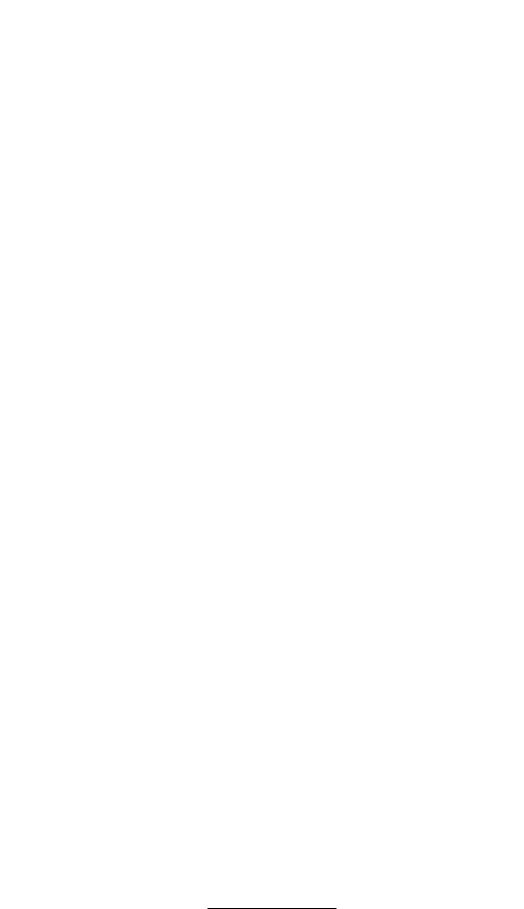
Study Session 8 Cross-Reference to CFA Institute Assigned Reading #34 - Understanding the Cash Flow Statement
1. B Net inco!lle - profits {'rom sale o{' land + dqHLl:iarion ~ decrease in ITLeivables· tncrease
in inventories + increase in acCOlllHS payable - decrease in wages payable + increase in deferred tax liabilities ~ 120 - 2 + 25 + 2010 + 7 -- 5 + 15 = $170. Note that
the profit on lhe sale of' land should be SublLIClnl ('rom net income to avoid douhle counting the gain in net income and investing aClivilies.
2.B Net income - profit on sale of building + depreciation = 45 - 20 + 75 = $100. Note that taxes and interest are already deducted in calculating net income, and that the profit on the sale of the building should be subtracted from net income.
:\. |
B |
Cash frolll sale of building - purchase of machinery = 40 - 20 = $20. |
4. |
A |
Sale of preferred sLOck, issuance of bonds - principal payments on bank borrowings |
|
|
- repurchase of common stock - dividends paid = .15 + 50 - 15 - 30 - 10 = $30. Note |
|
|
tlnl we did not include $lt5 of debt relired through issuance ofco!ll!llon stock since Ihis |
|
|
was a noncash transaClion. Knowing how III lLlndle J1onc.lSh trans;lctions is impOn'lnl. |
5. |
B |
Net Income = $1,500 x 0.2') = $.175, and cash How {'ro!ll operations ~ net income- |
|
|
gain on sale of !llachinery + depreciation - increase in accounts receivable - increase in |
|
|
inventory - decrease in accounts payable = 375 - 30 + 150 - 50 - 100 - 70 = $275. |
6. |
C |
The payment of in terest on debt is an operating cash flow under U.S. GAAP. |
7.C Depreciation docs not represent a cash flow. To the extent that it affects the firm's taxes, an increase in depreciation changes operating cash flows, but not investing cash flows.
8.A A change in notes payable is a financing cash flow.
9.B Under U.S. GAAP, dividends paid are reponed as financing activities. Under IFRS, dividends paid can be reponed as either operating or financing activities.
10. A Sales of inventory would be classified as operating cash How.
I\. B Issuing bonds would be classified as financing cash flow.
12.B Sale of land would be classified as investing cash flow.
13.A Increase in taxes payable would be classified as operating cash flow.
14.B Increase in notes payable would be classified as financing cash flow.
15.A Increase in interest payable would be classified as operating cash flow under U.S. GAAP.
1G. C Increase in dividends payable would be classified as financing cash flow under U.S.
GAAP.
17.C Write-off of obsolete equipment has no cash How impact.
18.B Sale of obsolete equipment would be classified as investing cash flow.
19.A Under IFRS, interest expense can be classified as either an operating cash flow or financing cash How.
©2008 Kaplan Schweser |
Page 137 |
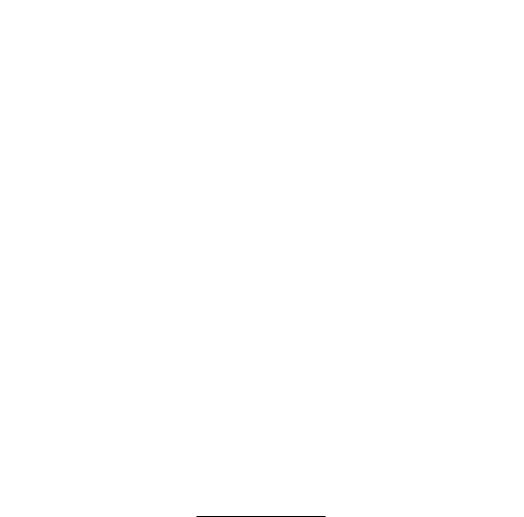
Study Session H
Cross-Refercncc to Cl-'A Institute Assigncd Rcading #34 - Understanding thc Cash Flow Statcmcnt
20. C Depreciation expense would be classified as no cash How impacL
21.• A Dividends received from invl's[l'nents would be classifi,·d as opnating cash How under U.S. CAAP.
22. C Tile excilange of debt securities ror elJuity securities is a noncasll lransaetiou.
2:). A Nct income |
PH,OOO |
I )qHeciatiou |
12,000 |
Unrealized gain |
(15,000) |
Increase in accounts receivable |
(52,000) |
[ncrease in KCOUI1lS payable |
2<),000 |
<:ash flow rrom operations |
$52,000 |
21.C l'urchased new fixed assets for S75,OOO _. cash .t2.l!.dl(),,\' from investing <":onvLrted Si70,OOO of prderr"d shares to common shares .. nuncash transactiun Received dividends of $12,000cash inHu\V from opnalium
Paid dividends uf $21,000cash 'l.m(Jm'C from financing i'vlongage repavn1l'nt of $17.000 - ca,h ()lllil,)\\' frun\ financing
<:Fl· ·7'S,O()0
<:IF'"-21 ,OO()- ] 7,000 =·$JH,O()()
25. B The cash flow statcmCI1l can be converted to common-sizc formal b)' expressing each line item as a percentage of revenue.
A.Nct income - gain on sale of l11achint:ry -I deprecialion - innease in receivables + decrease in inventories -I increase in accounts payable -I increJse in inlere'l p:lyable c
GO - 10 -I 100 - 50 -I GO -I 20 + 5 = $185.
B.C:lsh collections = sales - increase in receivables = 1,425 - 50 = $1,375.
|
Cash paid to suppliers = -cost 01" goods sold -I decrease in inventor), -I increJse in |
|
accounts payable = -1,200 -I GO -I 20 = -$1,120. (Note that the qucstion asks for Clsh |
|
paid to suppliers, so no negative sign is needed in the amweL) |
|
Other cash expenses = -interest expense + increase in interest payable - tax expense = |
|
-30 + 5 - 45 = -$70. (Note that the question asks for cash expenses so no neg:ltive sign |
|
is needed in the answer.) |
C. |
CFO cash collections - cash to suppliers - other cash expenses = 1,375 - 1,120 - 70 = |
|
$185. This must match the answer to Question A, because CFO using the direct method |
|
will he the same as CFO under the indirect method. |
D.CFF = sale of stock + new bank note - payment of mortgage - dividends + increase in
dividends payable = 30 -I |
100 - 50 - |
10 -I 5 = $75. |
|
CFI ~ sale of fixed assets - |
new fixed |
assets = 30 |
- 100 = -$70. Don't make this difficult. |
We sold assets for 30 and bonght assets for 100. |
Assets sold had an original cost of 80, so |
||
(gross) I'P&E only went up by 20. |
|
|
|
Page 138 |
©2008 Kaplan Schweser |

Study Scssion H
Cross-Reference to Cf'1\ Institute Assigned Reading #34 - Understanding the Cash Flow Statelllcnt
'rhe easiesl welY to determine lOlal cash flow is lO simply lake lhe change in cash [rom lhClbabnce sheer. llowevn, adding the three COll1pOnelllS of cash flow will yield
185 -70, 75c $190.
E. |
FeFF = cash flow from opnaliolls - capital spending + sale of fixed |
asselS + debl issued |
|
- debt repaid = $IH5 - 100 + 50 + 100 - ')0= $165. No adjuslment |
is necessary for |
|
illlerest since HJ;E includes debl service. |
|
FInvesting cash flow would be higher and financing cash flow would be lower. The company would spend less on investments bUl would not havl' inflows from lhl' borrowing.
©2008 Kaplan Schweser |
Page 139 |
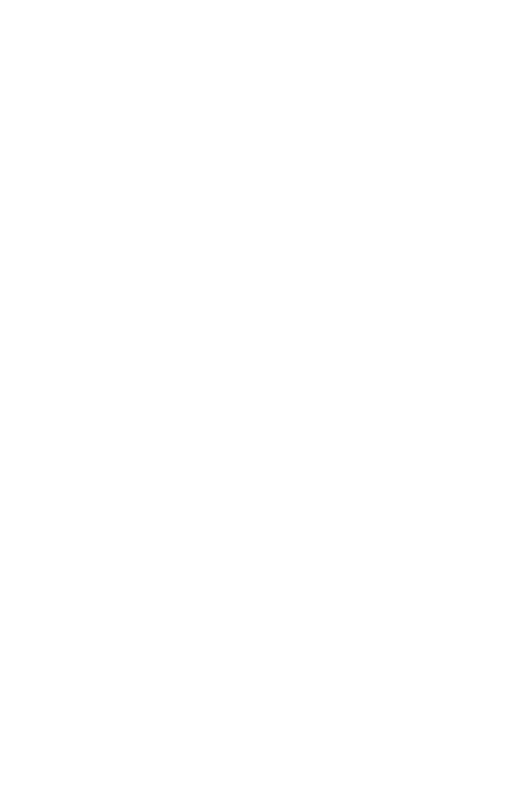
____________________________,.,M*NrinP'S....... ~
The following is a review of the Financial Reporting and Analysis principles designed to address the learning outcome statements set forth by erA lllstitute@. This topic is also covered in:
INVENTORIES
Study Session 9
EXAM Focus
This ropic review discusses specific analytical processes for inventory. The complic:ltion in analyzing inventory is that firms can choose among ditferent cost flow methods-I:IH), UFO, and weighted average cost. You should know how to calculate inventory balances and COGS
INVENTORY ACCOUNTING
using all three methods and how to convert LIFO inventory and LIFO COGS to a HFO basis for comparison. You must understand how the different cost flow methods afFect the flrm's liquidity, profitability, actlvJty and solvency ratios.
Metchandising firms, such as wholesalers and retailers, purchase inventory that is ready for sale. In this case, inventory is reported in one account on the balance sheet. On
the other hand, manufacturing firms normally report inventory using three separate accounts: raw materials, work-in-process, and finished goods.
The choice of inventory cost flow method affects the firm's income statement, balance sheet, and several important financial ratios. Additionally, the cost flow method can affect the firm's income taxes and, thus, the firm's cash flow.
The inventory cost flow method should not be confused with the inventory valuation method as required by IFRS and U.S. GAAP. Generally, inventory is reported on
the balance sheet at cost and a writedown (loss) is recognized if the market value of inventory declines below cost. The valuation method (lower of cost or net realizable value for firms reporting under IFRS, and lower of cost or market for firms reporting under U.S. GAAP) is applied regardless of the cost flow method.
Cost of goods sold is related to the beginning balance of inventory, purchases, and the ending balance of inventory. The relationship is summarized in the following equation:
COGS = beginning inventory + purchases - ending inventory
This equation can be rearranged to solve for any of the four variables:
Purchases = ending inventory - beginning inventory + COGS
Beginning inventory = COGS - purchases + ending inventory
Ending inventory = beginning inventory + purchases - COGS
Page 140 |
©2008 Kaplan Schwescr |
